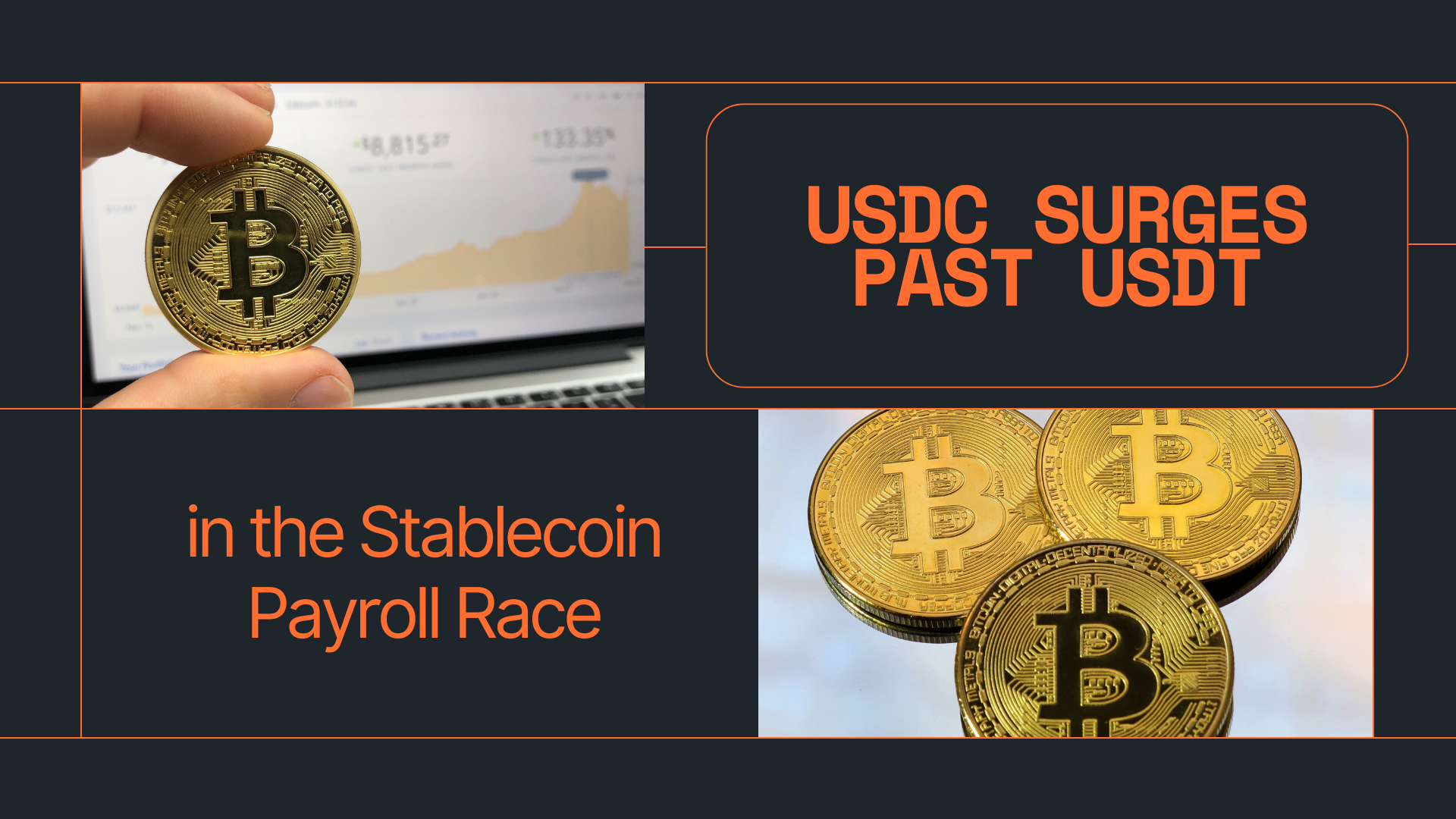
Circle’s USD Coin (USDC) has displaced Tether’s USDT as the preferred stablecoin for crypto payroll solutions, according to Pantera Capital’s newly released 2024 Blockchain Compensation Survey. The report—based on 1,600 professionals in 77 countries—shows that 63 % of all salaries paid in digital assets were settled in USDC, while USDT captured just 28.6 %. Together, the two dollar-pegged tokens account for more than 90 % of crypto-denominated pay packets.
Crypto Salaries Triple Year-on-Year
Pantera’s data indicates a sharp uptick in on-chain compensation: 9.6 % of respondents received at least part of their salary in cryptocurrency during 2024, up from 3 % in 2023. The findings track broader industry momentum, with employers turning to stablecoins for faster cross-border settlements, lower fees, and on-demand access to U.S.-dollar value—key pain points for globally distributed teams.
Why Employers Pick USDC Over USDT
Although USDT remains the most traded stablecoin by volume, HR platforms appear to favor USDC for payroll. Pantera notes that major Web3-friendly payroll providers—Deel, Remote, and Rippling—support USDC but not USDT, nudging companies toward Circle’s token for compliance and ease of integration.
Industry analysts also cite Circle’s transparency and regulatory push—such as monthly reserve reports and a pending U.S. federal trust-bank charter application—as factors that reassure corporate treasurers concerned about stablecoin risk management.
Stablecoin Payroll Adoption Beyond the West
Contrary to assumptions that USDC’s lead is a North-American quirk, the survey’s respondent pool spans Asia-Pacific, Europe, Africa, and LATAM. TradingView’s digest of the survey highlights strong interest in USDC among Asia-based contractors who rely on stablecoins for frictionless FX and capital-control avoidance.
The data reveal that other tokens barely register for salaries: Solana (1.9 %) and Ethereum (1.3 %) round out the list, underscoring stablecoins’ dominance wherever fiat-like price stability is paramount.
Salary Benchmarks Still Rising
The study also tracked compensation trends:
- Junior blockchain engineers saw median pay jump 25.6 %, with mid-level engineers up 14.5 %. Senior engineer salaries eked out a 4.9 % increase.
- Remote work remains the norm: 82 % of crypto professionals are fully remote, but on-site roles rose from 1.5 % to 6 % as some firms shifted to hybrid models.
- Academic pedigree matters less than hands-on skill: bachelor’s-degree holders earned higher median packages than master’s or Ph.D. peers, reflecting the sector’s bias toward practical expertise.
Market Implications for USDC and USDT
USDC’s payroll momentum complements its broader enterprise push. Circle recently partnered with Intercontinental Exchange (ICE) to pilot USDC-settled derivatives products, reinforcing the token’s reputation as a regulated “digital dollar” for capital markets.
For Tether, the findings underscore a strategic blind spot: despite its liquidity advantage in trading venues, the company has yet to secure footholds in payroll rails or mainstream HR software, potentially ceding a lucrative use case to its chief rival.
Outlook: Stablecoin HR Is Poised to Expand
With President Trump signing the bipartisan GENIUS Act in July 2025 to formalize U.S. stablecoin oversight, compliance-minded firms are likely to accelerate on-chain payroll experiments, particularly in sectors that already operate globally and digitally native.